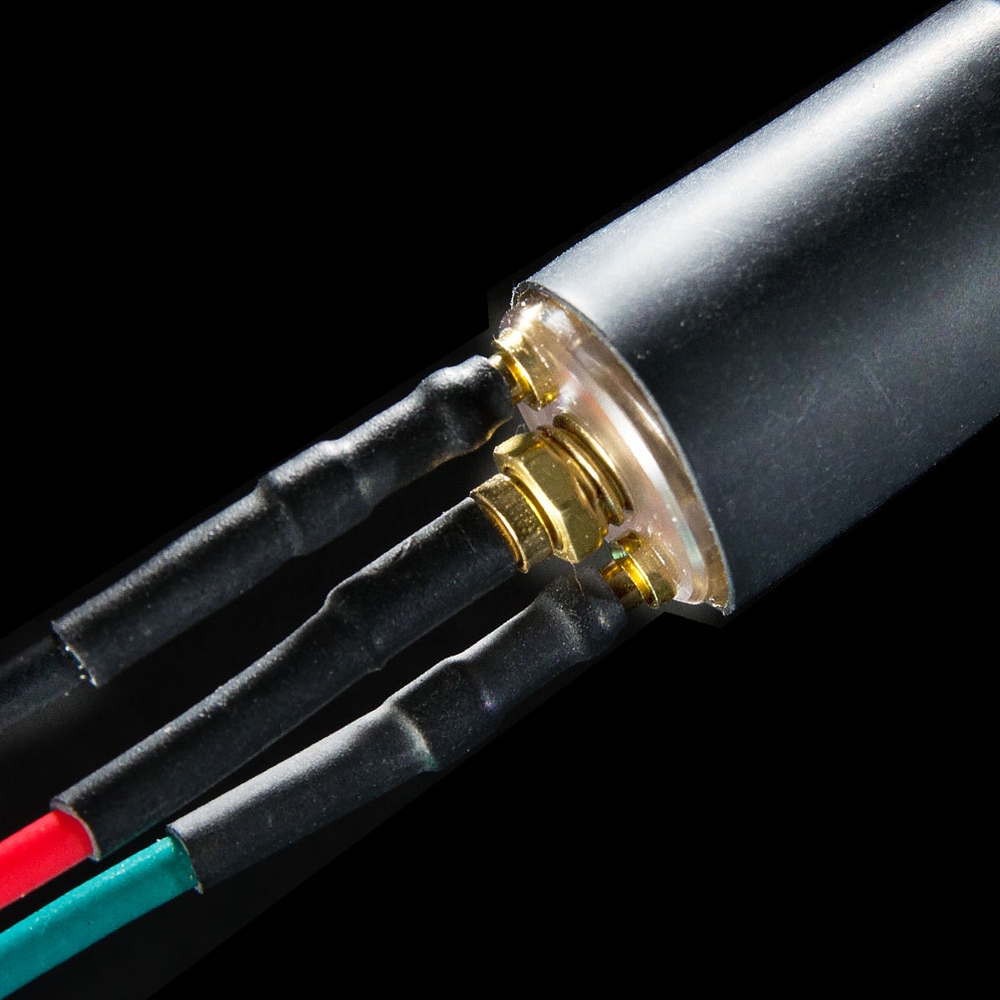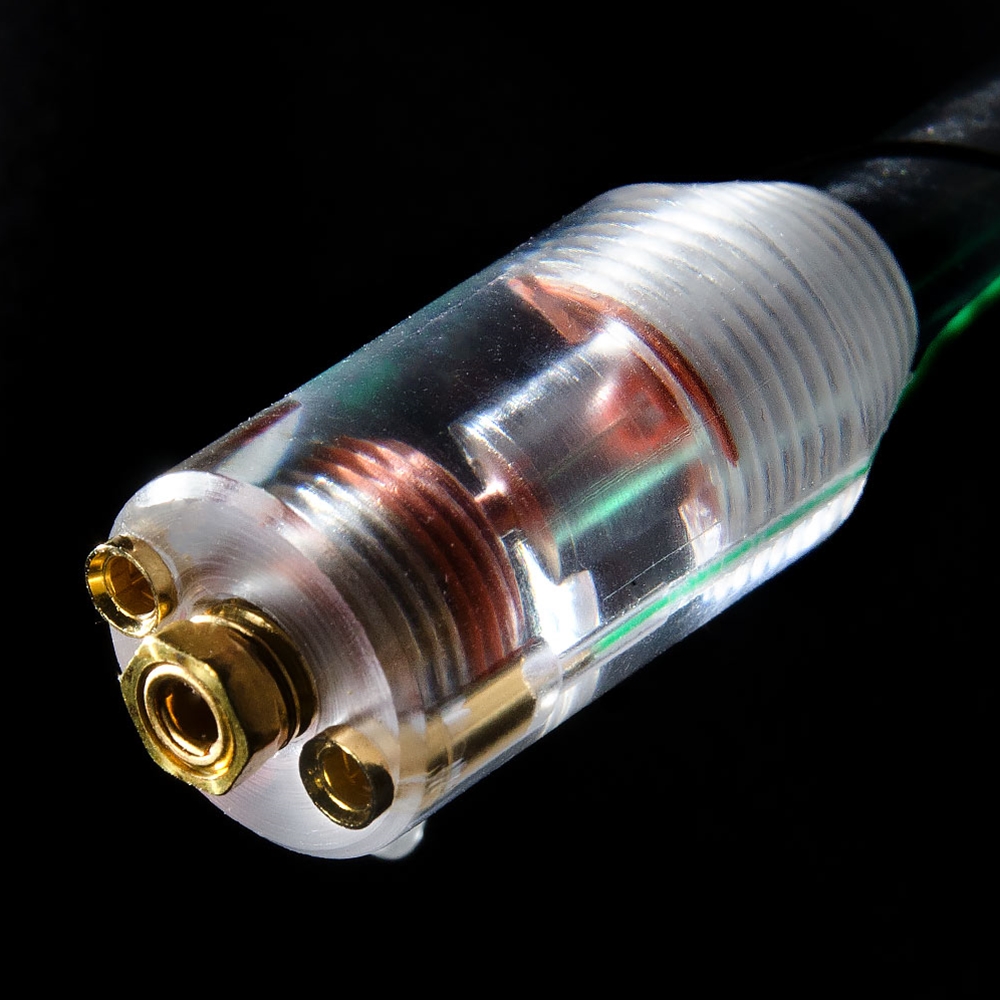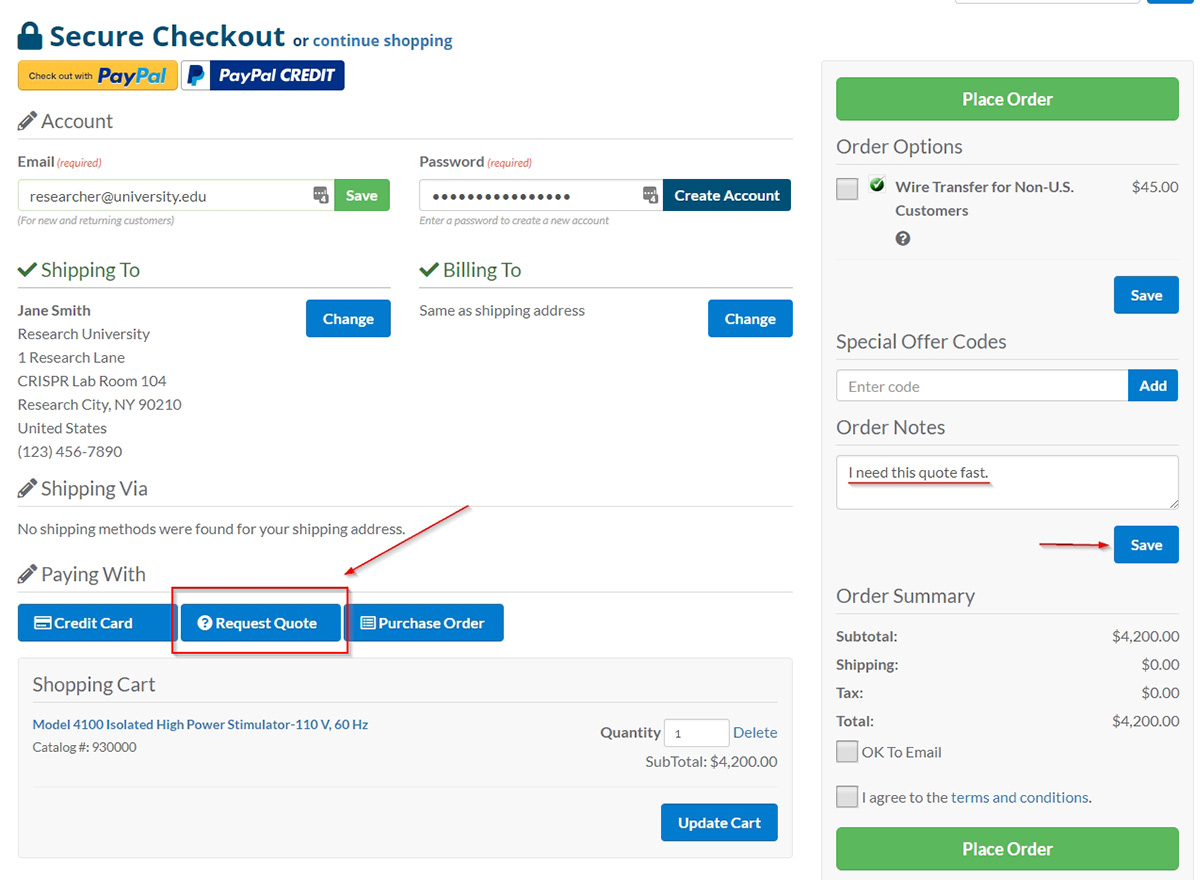Bipolar Suction Electrode
FOR BIPOLAR RECORDINGS
Easier connectivity to amplifiers, improved shielding, included reference lead.

The bipolar suction electrode incorporates many suggestions made by A-M Systems users over the years, and was recently redesigned using the guidance of Dr. Barry Rhoades of Wesleyan College. Those improvements include easier connectivity to amplifiers, improved shielding, and the inclusion of a reference lead, allowing the electrode to make bipolar recordings.
Applying a negative pressure to the inner cavity of the suction electrode via the small side port draws the tissue to be recorded from, or stimulated, next to or into the end of the suction electrode (either via a short glass capillary pipette, a disposable pipettor tip, or a short section of tubing). The inner cavity also contains a silver wire connected to a jack on the rear of the electrode. Outside of the cavity is a short segment of wire that can be utilized as the reference electrode, or a silver\silver chloride pellet with wire lead can be soldered to the suction electrode’s reference wire to complete the circuit. The suction electrode is offered with either a conductive EMI shield coating, or with a separate ground wire, depending on your preference.
With the suction electrode, it is easy to record extracellularly from very small hearts, insects, intestinal nerves, as well as stimulate muscle tissue. If the glass capillary is removed and replaced by some small diameter tubing, it is possible to record from tissues or animals while they move by contracting, expanding, or changing position. Instructions are also included on how to record using a common disposable pipettor tips, thereby eliminating the need and cost involved when using pulled glass pipettes.
Accessories packaged with each electrode include a set of 4” leads to connect the electrode to your amplifier, a short section of tubing allowing for easy connection to a luer suction source, and several disposable pipette tips that make recording by students simple.
We also offer specific cables that directly connect the suction electrode to the 5-Pin input connector on our Model 1700 Amplifier or 15-pin input connector on our Model 3000 Amplifier.
Features
- Bipolar
- With or without integrated ground shielding
- Easy pin connectors for connection to common amplifiers
- Large internal volume
- Can be used with glass capillary pipettes, disposable pipettor tips, or small diameter tubing
- Accepts capillary glass with outer diameters between 1.2 and 1.5mm
When using a glass capillary tube as an electrode
- Remove the Suction Electrode from the box. Note the glass capillary tubing at one end.
- Carefully unscrew the nylon threaded tip through which the glass capillary tubing passes.
- When the nylon threaded tip is free, remove the tip and the glass capillary tubing, leaving the silver wire in place.
- Remove the small O-Ring and the nylon threaded tip from the end of the glass tubing.
- Make a suitable capillary tube for the experiment, having an opening at the tip, and slide it into the nylon threaded tip. Next slide the small O-Ring over the tube.
- Slide the tube over the silver wire and screw the nylon threaded tip into the plastic body of the suction electrode. It is not necessary to tighten the nylon tip excessively to make a watertight seal.
Proceed to General Instructions
When using a disposable pipette tip as an electrode
- Remove the Suction Electrode from the box. Note the glass capillary tubing at one end.
- Carefully unscrew the nylon threaded tip through which the glass capillary tubing passes.
- When the nylon threaded tip is free, remove the tip and the glass capillary tubing, leaving the silver wire in place.
- Remove the small O-Ring and the nylon threaded tip from the end of the glass tubing. Replace the small O-Ring into the hole, and reinsert the nylon tip.
- Place large O-Ring over end of suction electrode body.
- Thread the 20uL pipette tip over O-Ring. Place the 1uL pipette over the larger pipette. This second pipette tip can be replaced during the course of the experiment if it becomes clogged, without removing the larger base pipette tip.
Proceed to General Instructions
General Instructions
- Keep the silver wire as close to the end of the capillary tubing as possible for best recording and stimulation. If the tube is not the right length, loosen the nylon tip and adjust the tube accordingly.
- Place the assembled suction electrode into the micromanipulator.
- Attach a length of appropriate tubing to the side suction port for use to apply negative pressure.
- Place the capillary glass tube or the pipettor tip opening into the electrolyte and draw up some of the electrolyte into the glass tubing.
- Connect the appropriate signal, reference, and ground jacks to the amplifier inputs. The silver wire inside the suction electrode is connected to the central 2mm jack. The black reference wire is connected one of the 1.6mm jacks. The conductive outer shield (if present) or the bare ground wire is connected to the 1.6mm jack marked with a small “G”
- Move the tube close to the tissue to be recorded or stimulated. Aspirate the tissue into or next to the electrode tip before recording or stimulating.
Clean-Up
- Rinse out the suction electrode with distilled water after each use.
General Precautions
- Take care in handling the electrode to ensure that excessive force is not applied in such a way to cause damage.
- Do not allow the suction electrode to contact organic solvents.
- Avoid exposing the electrode to heat.
| Catalog # | Product | Price | |
|---|---|---|---|
| 573090 | Direct Cable to 1700 Input Connector |
Price:
$176.00
|
|
| 573095 | Direct Cable to 3000 Input Connector |
Price:
$44.00
|
|
| 573060 | Reference Wire and Pin for Suction Electrode 6" (Qty: 3) |
Price:
$30.00
|
|
| 701900 | Single-Channel Headstages Input Cable Set for Post-2013 Headstages-4 in. |
Price:
$45.00
|
|
| 573075 | Suction Electrode to Dual Banana Cable (3 ft) |
Price:
$44.00
|
|
| 573080 | Suction Electrode to Male BNC Connector Cable (3ft) |
Price:
$44.00
|
|
| 573085 | Suction Electrode to Female BNC Connector Cable (3ft) |
Price:
$44.00
|
|
| 573012 | Side Tubing with Luer Connector |
Price:
$40.00
|
|
| 573001 | Replacement O-Ring for Suction Electrode |
Price:
$40.00
|
Requesting a Quote Is Simple
Add your desired products to cart, and choose "Request Quote" as your payment option at checkout.
We will generate a formal quote and email it to you usually in less than 24 hours.
If you have additional requirements, please add them to the Order Notes and click save (as shown in the image).









